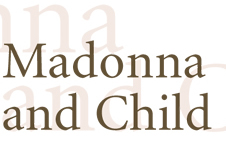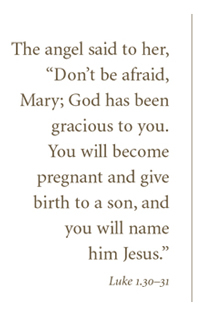





 The Madonna
and Child is one of the most familiar Christian images, tracing its legendary
origins to the portrait from life allegedly painted by St. Luke. Sanctioned
by the fifth-century Council of Ephesus, the Virgin as Theotokos (“God-bearer”),
shown together with her son, became extremely popular.
The Madonna
and Child is one of the most familiar Christian images, tracing its legendary
origins to the portrait from life allegedly painted by St. Luke. Sanctioned
by the fifth-century Council of Ephesus, the Virgin as Theotokos (“God-bearer”),
shown together with her son, became extremely popular.
Several iconographic types were developed through the centuries, emphasizing in turn the mystery of the Incarnation,the majesty of the figures, or the tenderness of the mother and child relationship.
The works in this exhibition, spanning seven centuries, witness iconographic and stylistic variety. The protagonists are identified by their relationship and attributes, rather than a physiognomic type. Their facial features change according to time period, style, and artist. The Christ Child is depicted in turn as a miniature adult and a chubby, more naturalistic-looking child, in playful interaction with his mother. The only constant in the portrayal of the Virgin Mary is her interaction with the child: the beautiful young woman, often veiled, gazes lovingly at her son. Sometimes her gaze is sad, filled with the premonition of his impending sacrifice.